Lewis Hamilton and Mercedes dominated the times as testing for the 2024 Formula 1 Spanish Grand Prix got underway, while Red Bull and Max Verstappen appeared to be struggling.
But digging beyond the FP2 headlines reveals that Verstappen and his colleagues are far from panicking – with a major setup change coming for his RB20 on Saturday that will bring gains both over a lap and down the stretch term.
At the same time, Mercedes is quietly confident in its ability to stay in the race, more so than at other events this season, where it looked strong at the start of the weekend before fading.
Add to that fast times on the drivers and strong long-distance pace from McLaren and Ferrari, and there is hope that a theoretical four-way fight for Barcelona supremacy will play out in the sessions that matter.
Today’s story
Given the high demand for tires in Barcelona and the stability value of early aerodynamic data at this familiar circuit, FP1 was a fairly quiet affair. George Russell, Verstappen and Carlos Sainz traded first place during the initial setup with the harder compounds.
Verstappen then led the transition to the softs before being beaten by 0.024 seconds thanks to Lando Norris and the Briton leading FP1 in 1m14.228s. After a brief red flag period as debris from Fernando Alonso’s Aston Martin was recovered at Campsa (Turn 9), the field switched to a higher fuel regime.
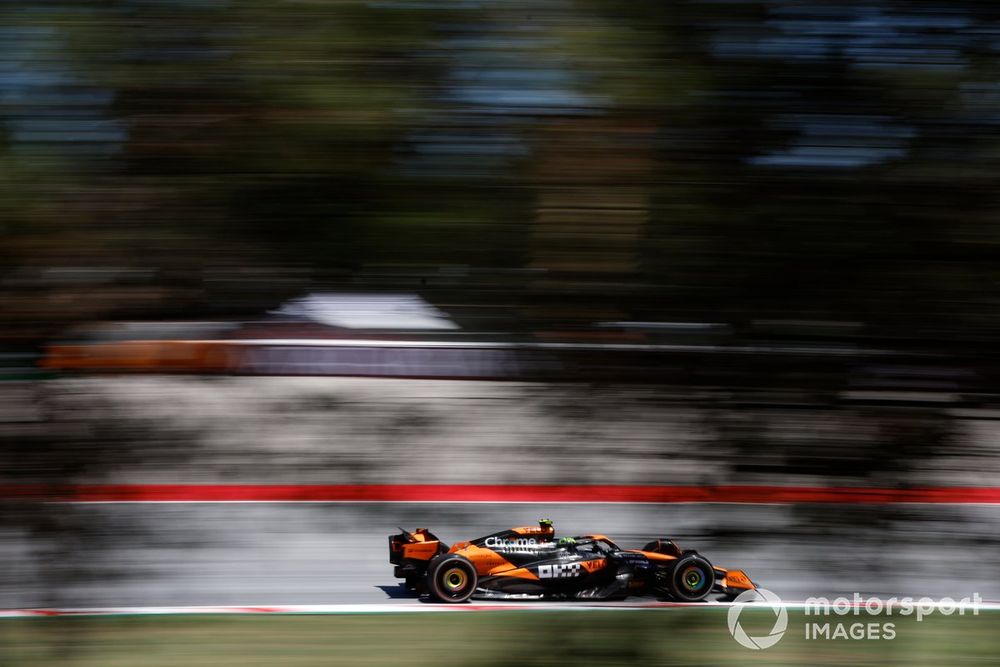
Norris came out of the traps fastest in FP1 and was near the top of FP2 later in the afternoon
Photo by: Steven Tee / Motorsport Images
In FP2, Mercedes led from the start – with Russell leading the pack on the medium tires. Sainz was the first of the leaders to switch to the softs and his time was only beaten by Hamilton’s session in the lead in 1’13”264, an effort achieved five minutes later.
Pierre Gasly put his Alpine in a surprise fourth place during his FP2 qualifying simulation effort, before Hamilton tried a second set of softs and managed to improve on his previous time. Sergio Perez finished his soft tire drive much later than the others as Red Bull made numerous setup adjustments, with the Mexican driver finishing 13th and 0.577 seconds behind fifth-place Verstappen.
The peloton then carried out the typical data collection exercises over long periods in FP2 regarding tire life, which was only notable for the fact that Ferrari spent a lot of time changing Charles Leclerc’s settings (the Monaco winner calling his car “horrible” in FP1 when he had to catch big oversteers at Turn 2) and Hamilton and Norris plunging their wheels into the gravel.
The critical corners of Turns 10 and 12 are where Hamilton recovers his previous losses of 0.125 seconds.
These incidents took place late, respectively at the exits of turn 12 and Campsa. Norris was so wide at the time that he feared he had suffered ground damage to his McLaren.
What the data tells us
The fact that Mercedes, Ferrari and McLaren’s best FP2 times were covered in 0.055 seconds shows how tight things are at the moment.
Mercedes also believes Russell could have equaled Hamilton’s time at the head of the session had he not been “held up by (Nico) Hulkenberg at turn 10 and lost four and a half tenths”, according to team boss Toto Wolff .
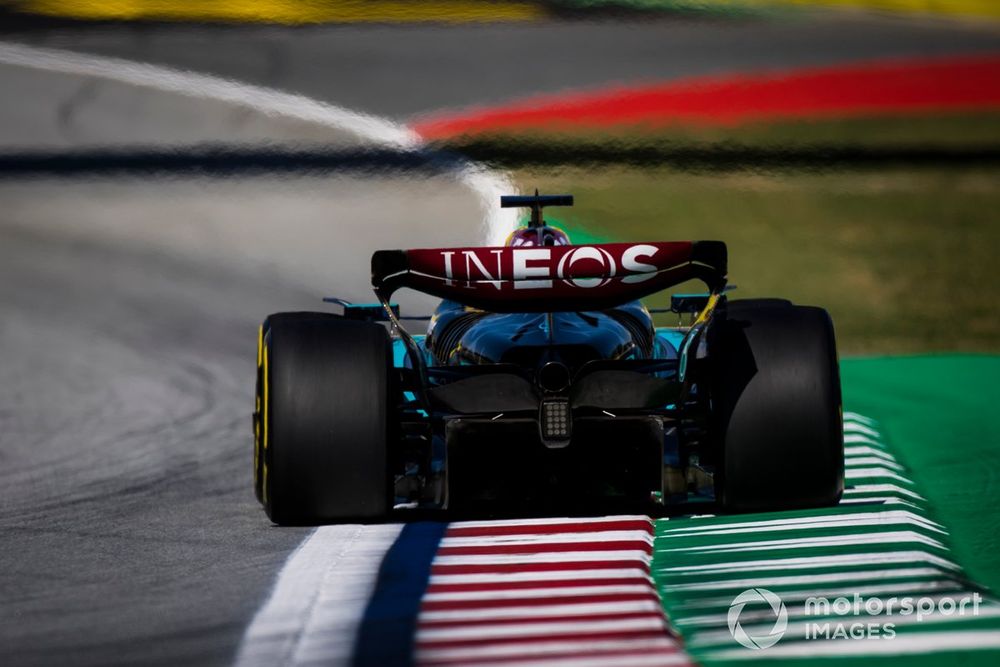
Mercedes believes Russell could have matched Hamilton’s FP2 time without traffic
Photo by: Sam Bloxham / Motorsport Images
FP2 overall times
| Position | Driver | Team | Time |
|
1 |
Hamilton | Mercedes | 1m13.264s |
| 2 | Sainz | Ferrari | +0.022s |
| 3 | Norris | McLaren | +0.055s |
| 4 | Gasly | Alpine | +0.179s |
| 5 | Verstappen | Red Bull | +0.240s |
| 6 | Sloppy | Sauber | +0.660s |
| 7 | Magnussen | Haas | +0.757s |
| 8 | Alonso | Aston Martin | +0.827s |
| 9 | Tsunoda | R.B. | +0.947s |
| ten | Albon | Williams | +1.543s |
What’s interesting about Hamilton’s best FP2 time is that – based on GPS track data, as well as additional information gleaned from the Barcelona paddock by Motorsport.com, which includes the understanding that Mercedes has probably more to say about engine performance on Saturday – for the entire first sector. and in the first two corners of sector two he is behind the drivers he eventually ends up with.
The critical corners of Turns 10 and 12 are where Hamilton recovers his previous losses of 0.125 seconds. This suggests he faced the typical Barcelona challenge of not pushing too hard at the start of a lap and still having some life in the tires in the final corners. Even without the low-speed chicane that has been removed from the F1 track for 2023, this challenge remains demanding and will be a key part of tomorrow’s qualifying.
The GPS data also shows something unusual for a Friday without a sprint: Verstappen’s Red Bull is ahead of its rivals at full speed on the straights.
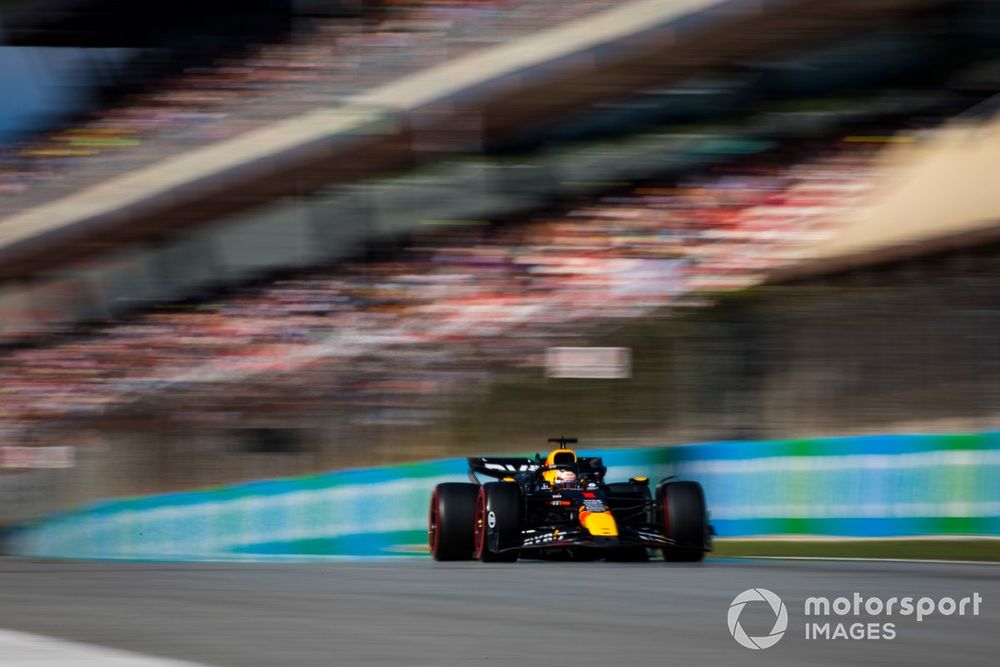
Verstappen was quick through speed traps even though Red Bull only finished fifth in FP2
Photo by: Sam Bloxham / Motorsport Images
Typically, Red Bull runs with its engine mode significantly reduced in testing and while rival teams again timed this in their post-FP2 study of Verstappen’s time, the Dutchman’s thin rear wing, compared to a Barcelona’s more normal downforce arrangement, made the difference on the straights. .
“The settings need to go in that direction (higher downforce) for the race,” said Helmut Marko, motorsport advisor at Red Bull, referring to how a larger rear wing would naturally improve tire life. and would add stability on a lap on this track. “We didn’t use full power, so it’s not that alarming. Long runs were ok.
Red Bull’s best long-distance soft average is a whopping 0.71 seconds ahead of McLaren and 0.158 seconds better than Mercedes.
Low long-term averages
| Position | Team | Time | towers |
| 1 | Red Bull | 1m19.342s | 6 |
| 2 | McLaren | 1m20.052s | 12 |
| 3 | Mercedes | 1m20.210s | 12 |
| 4 | Ferrari | 1m20.316s | 14 |
| 5 | Alpine | 1m20.881s | 12 |
| 6 | Aston Martin | 1m21.065s | 11 |
| 7 | Haas | 1m21.276s | 15 |
| 8 | Williams | 1m21.712s | 14 |
| 9 | R.B. | 1m22.053s | 17 |
|
N / A |
Sauber |
Marko’s final point can be seen in the table above – where, as always, it is important to remember the different caveats regarding fuel loads during training depending on the teams.
On this point, it should be noted that on the best soft tire averages and medium tire averages of the teams concerned (see below), Alpine is falling back among the favorites.
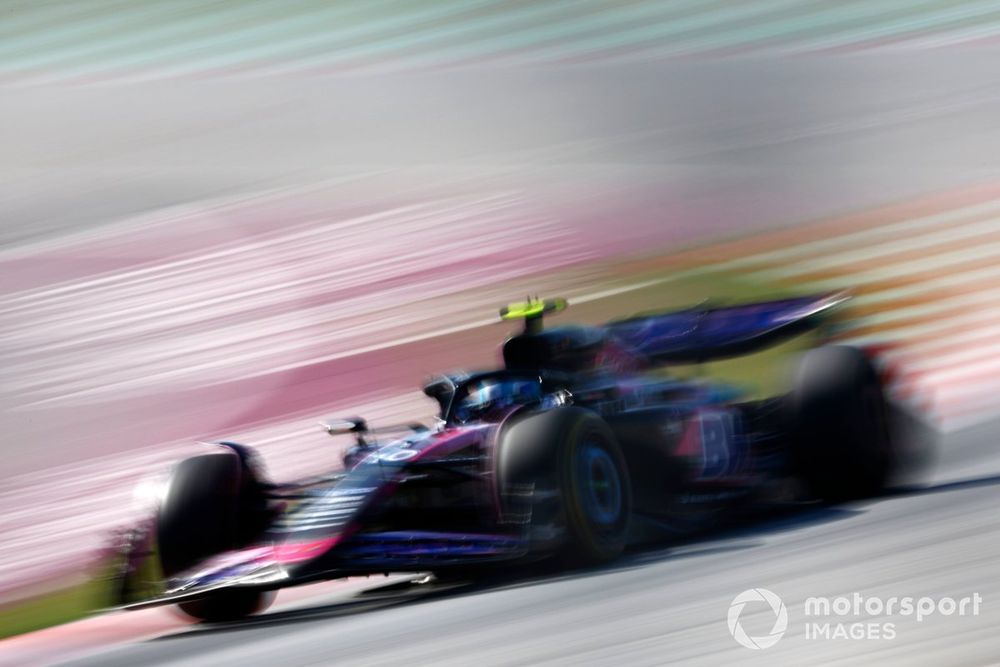
Alpine pulls away from the lead pack when longer races are factored into the mix
Photo by: Zak Mauger / Motorsport Images
Nonetheless, Red Bull’s best average on long soft runs is 0.71 seconds higher than McLaren’s and 0.158 seconds higher than Mercedes’. Verstappen’s times on the red-walled compound, however, were rather down on those of Norris and Hamilton, suggesting he was suffering from greater tire degradation than the two Britons.
They were seemingly rewarded for starting their races with more restraint, with Norris in turn able to get closer to the pace he started at on the softs compared to Hamilton.
One caveat to point out here is how Verstappen and Norris were staggered when testing two compounds – the latter going for a longer test on the mediums to a shorter second stint on the softs, with Norris doing the reverse . Hamilton only completed one long stint on softs.
The averages show that Ferrari is even further adrift on long-run pace at this point – including the medium tire averages. Here, the lower number of laps achieved by McLaren and Ferrari is another positive sign for Red Bull ahead of what will be a two-stop race, where the hard tires are not expected to be a particularly good racing tire.
What’s also intriguing for Ferrari is the amount of work done to Leclerc’s car ahead of its long FP2 closing run, with the Scuderia apparently making considerable setup changes around a height adjustment. crate while the SF-24 was kept in the garage.
Medium-long term averages
| Position | Team | Time | Towers |
| 1 | McLaren | 1m19.030s | 4 |
| 2 | Ferrari | 1m20.247s | 5 |
| 3 | Red Bull | 1m20.506s | 12 |
| 4 | Alpine | 1m21.133s | ten |
| 5 | Sauber | 1m21.257s | 14 |
| 6 | Haas | 1m21.331s | 13 |
| 7 | R.B. | 1m21.507s | 12 |
| 8 | Aston Martin | 1m21.630s | 11 |
| N / A | Mercedes/Williams |
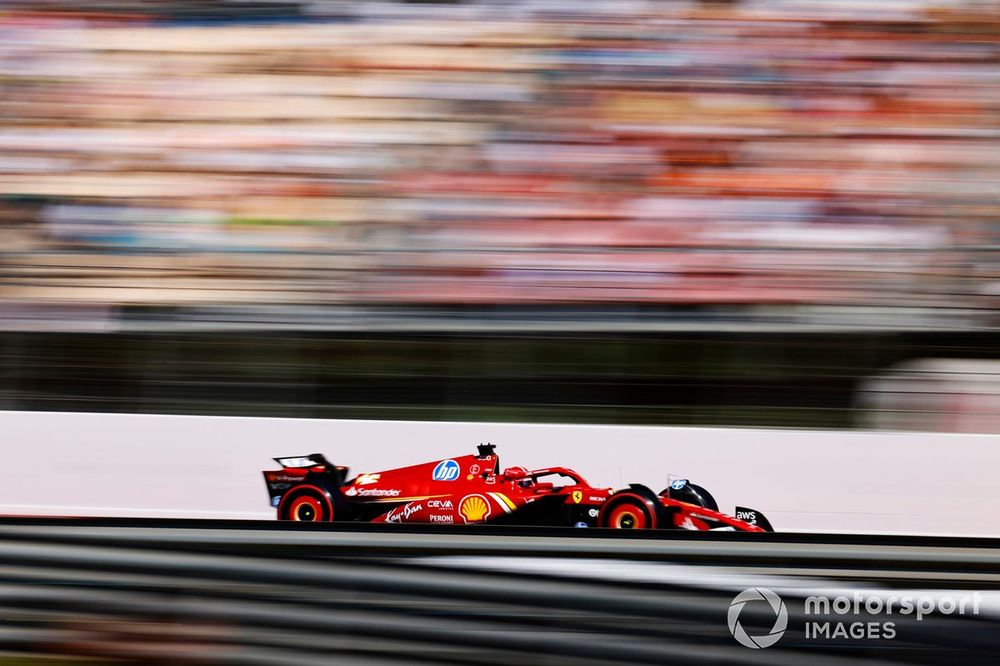
Is there more to come from Ferrari and Leclerc tomorrow after setup changes kept him in the garage in FP2?
Photo by: Andrew Ferraro / Motorsport Images